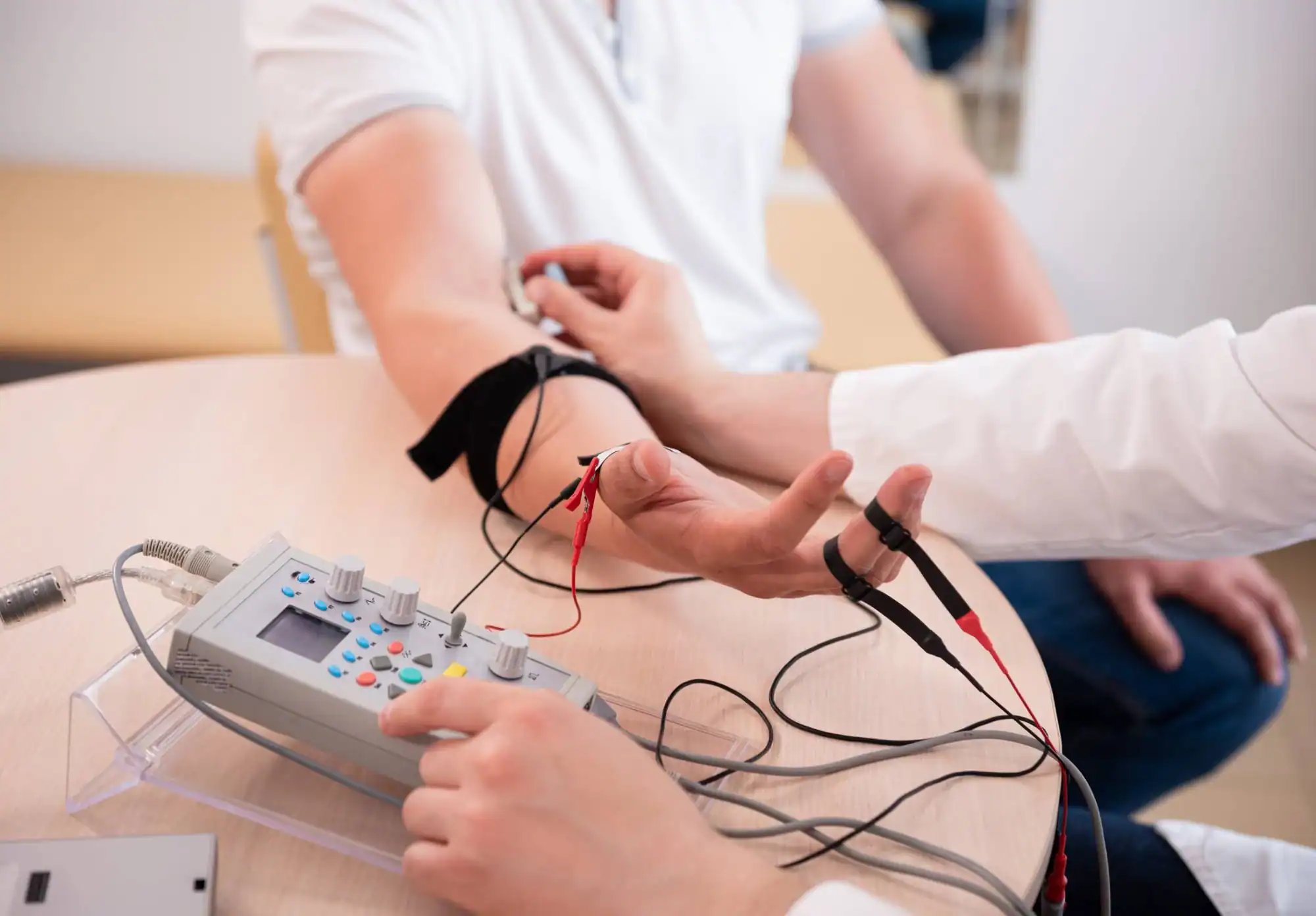Advanced electromyography testing that pinpoints nerve and muscle issues so you can move forward with confidence.
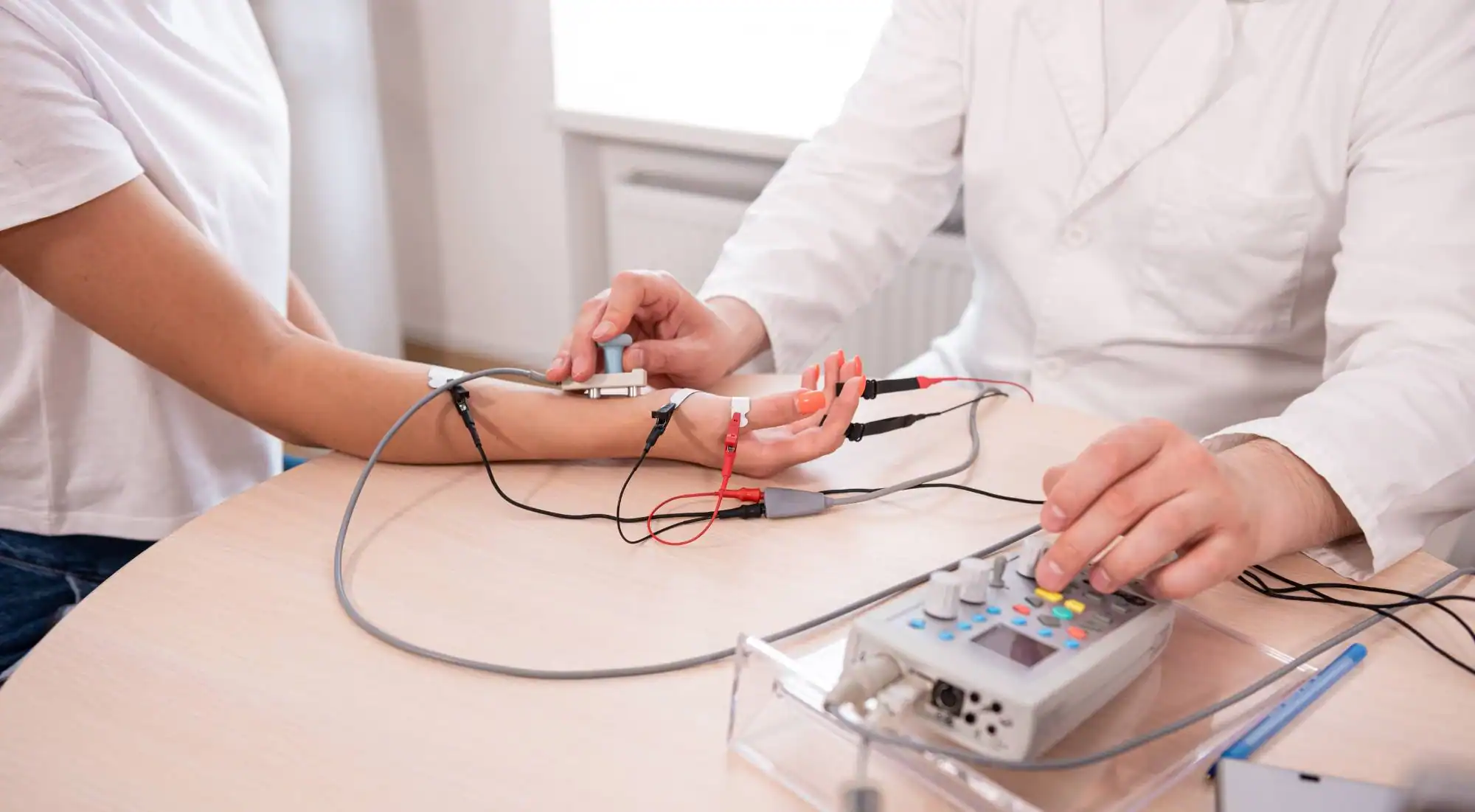
Reviews
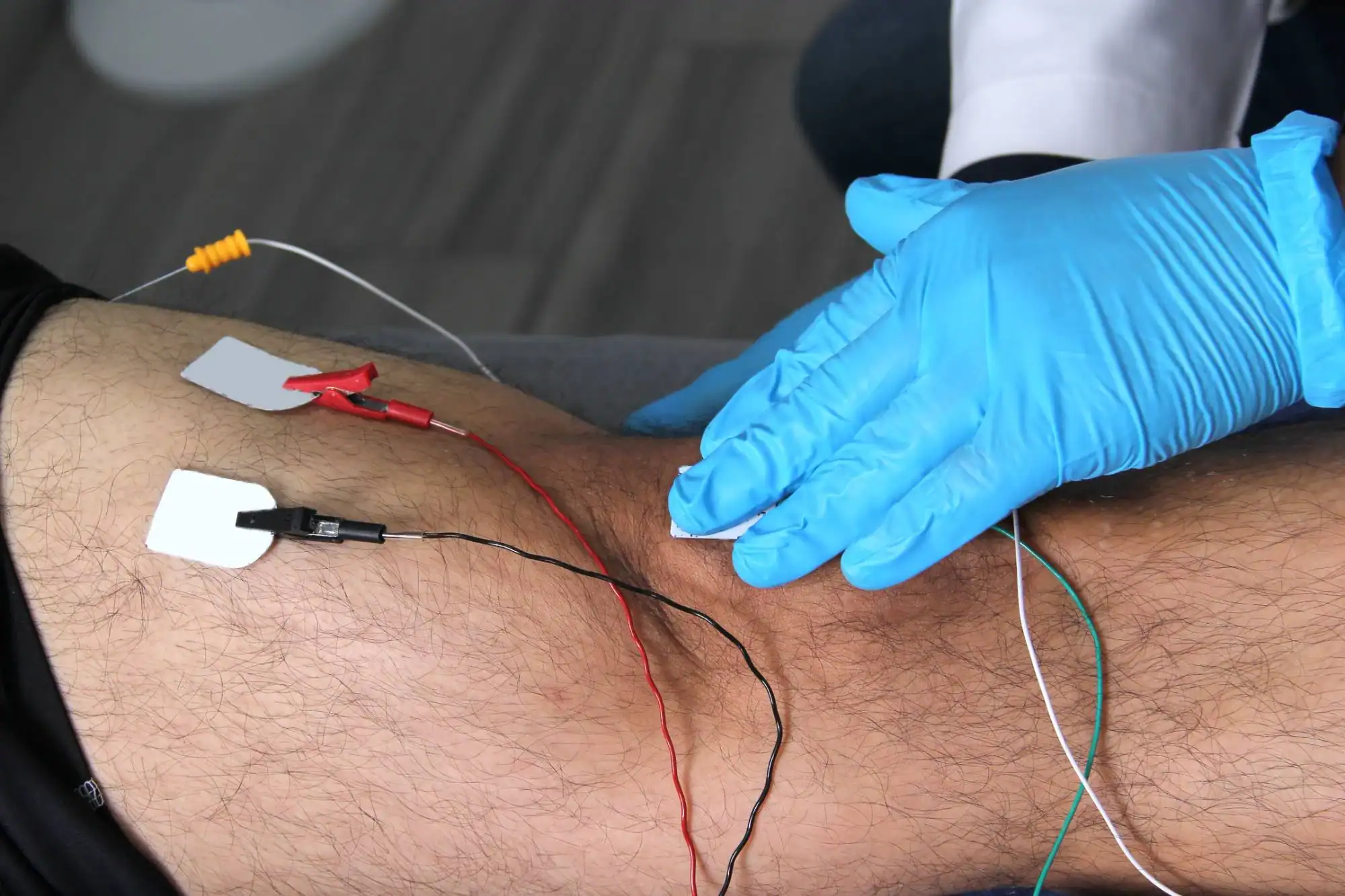
That tingling in your hands during meetings. The numbness that wakes you up at night. The muscle weakness that’s making simple tasks frustrating.
You’ve been wondering what’s really going on, and your doctor recommended EMG testing to get answers. Smart move.
EMG testing gives you the diagnostic clarity you need. Instead of guessing about nerve damage, muscle disorders, or circulation issues, you’ll have precise measurements that show exactly what’s happening in your body. No more wondering if that numbness is serious or if the weakness will get worse.
With accurate results, you and your doctor can create a treatment plan that actually addresses the root cause. Whether it’s carpal tunnel syndrome, a pinched nerve, or a muscle condition, you’ll know what you’re dealing with and what your options are.
We focus specifically on spine, nerve, and muscle conditions. That means when you come in for EMG testing, you’re working with practitioners who see these symptoms every day and understand exactly what you’re going through.
We’ve been serving the Upper West Side community with diagnostic testing that gets to the bottom of nerve and muscle issues. No rushing through appointments or generic explanations.
You’ll get clear information about your test results and what they mean for your daily life. We coordinate directly with your referring physician, so everyone’s on the same page about your care.
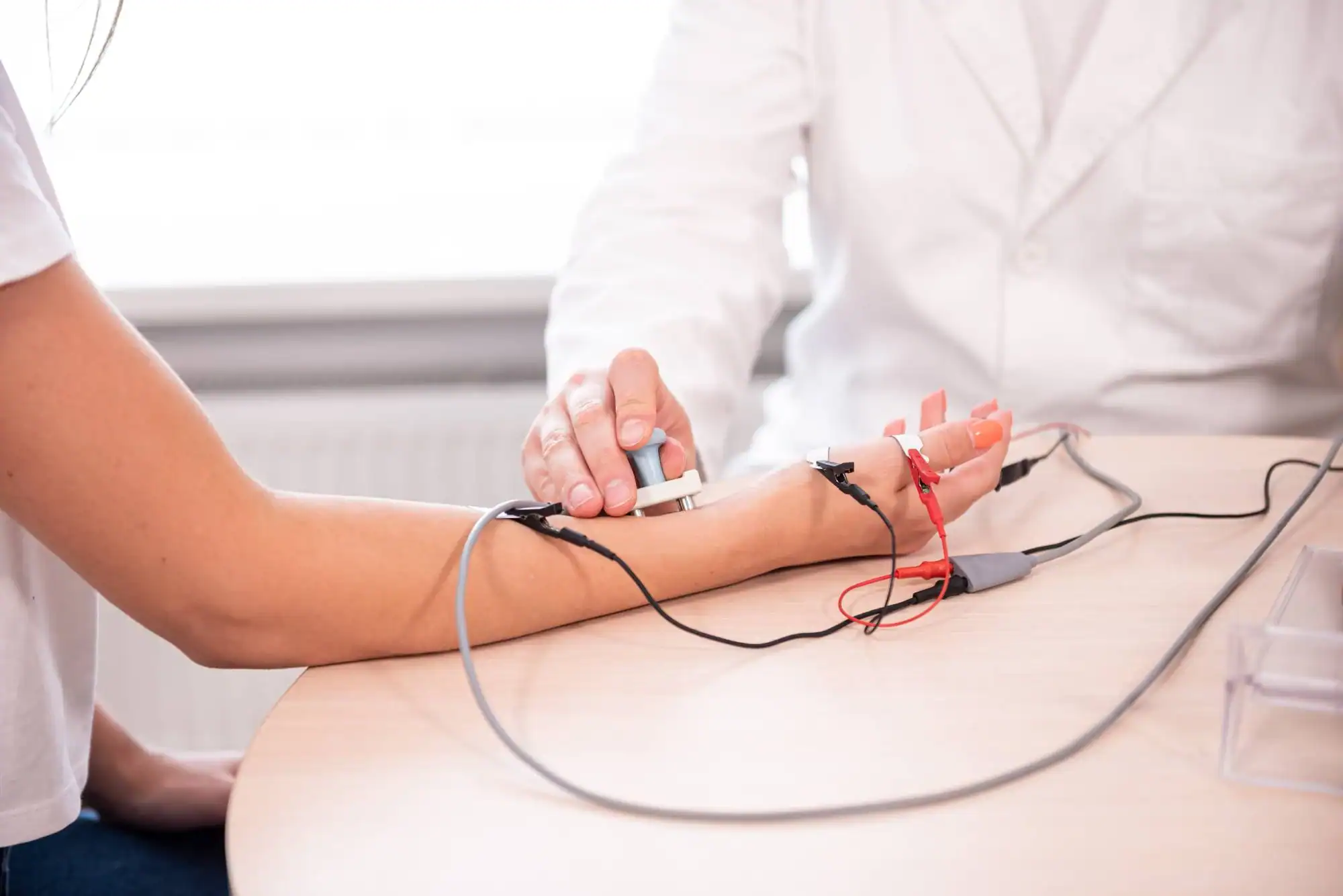
EMG testing involves two parts: nerve conduction studies and electromyography. Both give different but important information about how your nerves and muscles are functioning.
During the nerve conduction study, small electrodes are placed on your skin. Mild electrical pulses test how well signals travel through your nerves. This part measures the speed and strength of nerve signals, which helps identify problems like carpal tunnel syndrome or nerve compression.
The electromyography portion uses a thin needle electrode inserted into specific muscles. This measures the electrical activity in your muscles both at rest and when you contract them. It sounds uncomfortable, but most patients find it’s much more tolerable than they expected.
The entire process typically takes 30 to 60 minutes, depending on which nerves and muscles need testing. You’ll get preliminary results right away, with a complete report following within a few days.
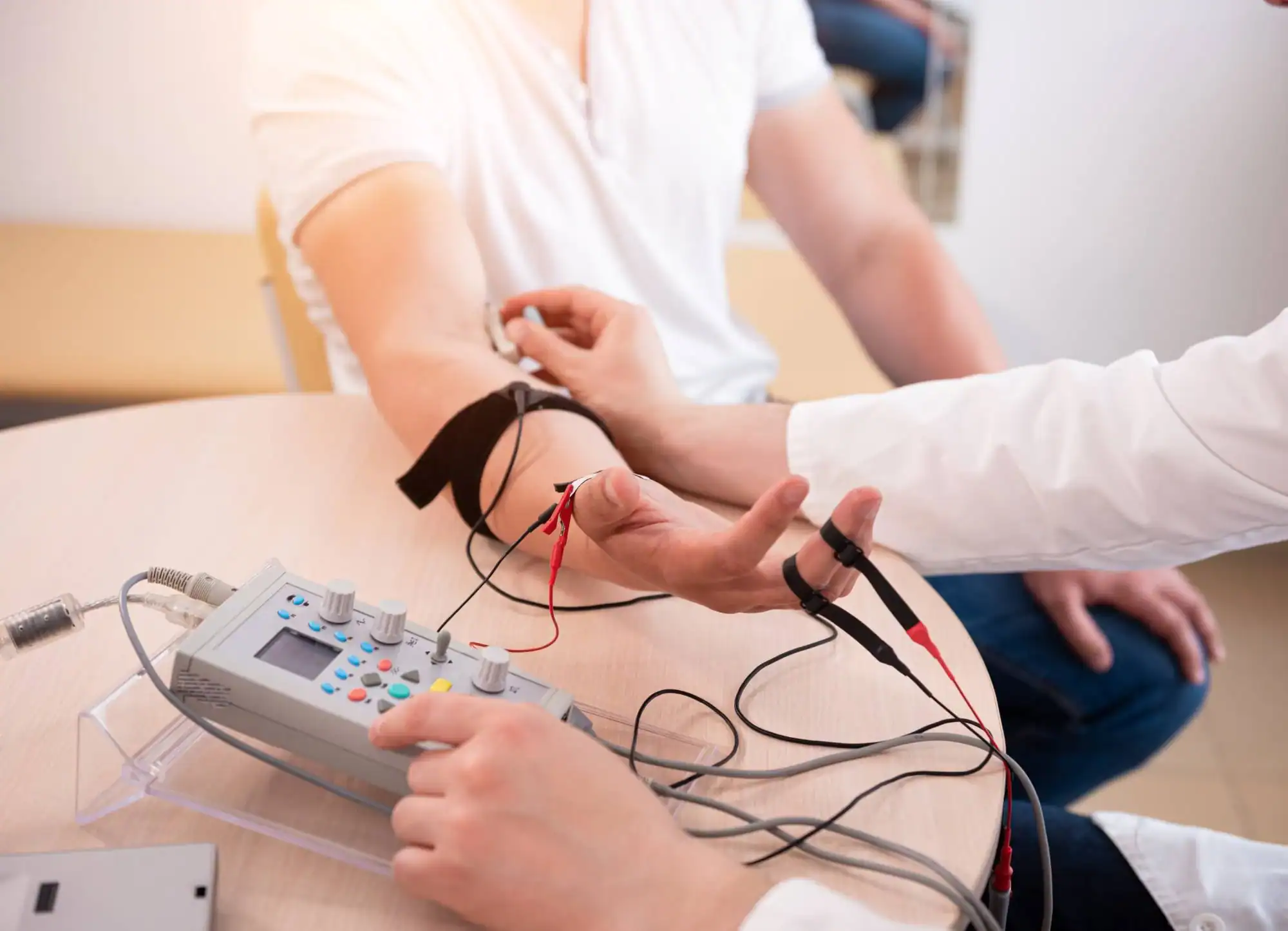
Ready to get started?
Your EMG testing appointment includes both nerve conduction studies and electromyography testing as needed for your specific symptoms. The testing targets the exact areas where you’re experiencing problems, whether that’s your hands, arms, legs, or back.
You’ll receive a thorough explanation of what the tests show and how the results relate to your symptoms. The report goes directly to your referring physician, but you’ll also understand exactly what was found and what it means.
Most patients appreciate that the testing is done efficiently but thoroughly. There’s no rushing through the process, but there’s also no unnecessary extension of uncomfortable procedures. The focus is on getting the diagnostic information you need as comfortably as possible.
Follow-up coordination with your doctor ensures that your treatment plan can move forward quickly based on the test results.
